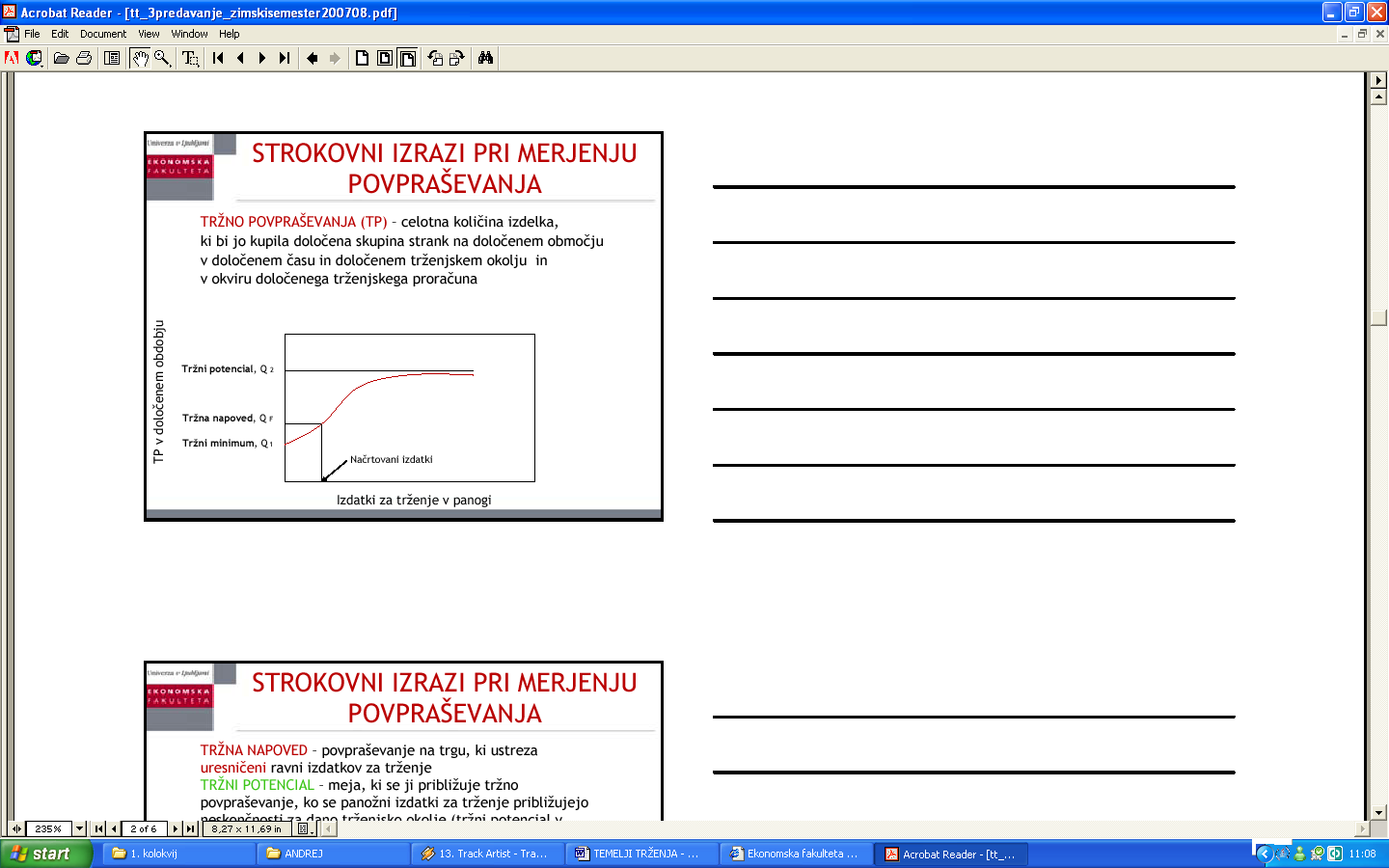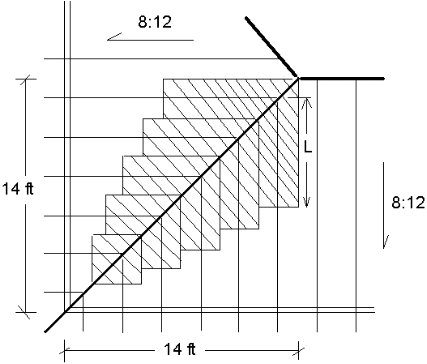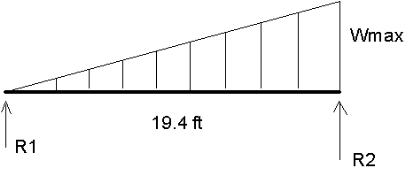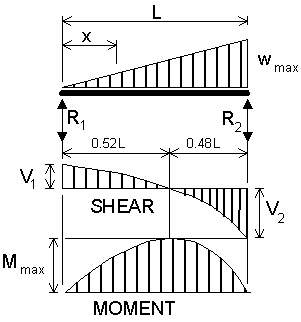ERRATA 1 RESIDENTIAL STRUCTURAL DESIGN GUIDE – 2000 EDITION
KANTA HL7RAJAPINTAPINTAMÄÄRITTELYT SUUN TERVEYDENHUOLLON CDA ERRATA MÄÄRITTELYNMILITARY JUDGES’ ERRATA SHEET UNITED STATES V
122298 ERRATA LIST THE DESIGN PERFORMANCE AND ANALYSIS
2007 JOINT STATISTICAL MEETINGS ERRATA SHEET PROGRAM CHANGES AS
ABSOLUTE JAVA 3E ERRATA 1 PAGE 801 DISPLAY 158
ARMED CONFLICT DATASET – VERSION HISTORY AND KNOWN ERRATA
EXAMPLE 5
ERRATA #1: Residential Structural Design Guide – 2000 Edition
July 2000
Replace Example 5.11 with the following:
|
EXAMPLE 5.11 |
Hip Rafter Design |
|
||||||||
|
|
|
|
|
|
||||||
|
|
|
Given |
|
|
||||||
|
|
|
|
|
|
One-story building Hip rafter and roof plan as shown below Rafters are 2x8 No. 2 Hem-Fir at 16 in on center Loading (see Chapter 3) Dead = 10 psf Snow = 10 psf Wind (90 mph, gust) = 4 psf (inward) = 10 psf (uplift) Live (roof) = 15 psf |
|||||
|
|
|
|
|
|
|
|||||
|
|
|
|
|
|
|
|
||||
|
|
|
|
|
|
Hip Rafter Framing and Tributary Load Area |
|
||||
|
|
|
|
|
|
||||||
|
|
|
Find |
1. Hip rafter design approach for conventional rafter-ceiling joist roof framing. 2. Hip rafter design approach for cathedral ceiling framing (no cross-ties; ridge beam and hip rafter supported by end-bearing supports). |
|
||||||
|
|
|
|
|
|
|
|||||
|
|
|
Solution |
|
|
||||||
|
|
|
|
|
|
|
|||||
|
|
|
1. |
|
Evaluate load combinations applicable to the hip rafter design (see Chapter 3, Table 3.1)
By inspection, the D + Lr load combination governs the design. While the wind uplift is sufficient to create a small upward bending load above the counteracting dead load of 0.6 D, it does not exceed the gravity loading condition in effect. Since the compression edge of the hip rafter is laterally braced in both directions of strong-axis bending (i.e., jack rafters frame into the side and sheathing provides additional support to the top), the 0.6 D + Wu condition can be dismissed by inspection. Likewise, the D + W inward-bending load is considerably smaller than the gravity load condition. However, wind uplift should be considered in the design of the hip rafter connections; refer to Chapter 7. |
|
|||||
|
|
|
|
|
|
|
|||||
|
|
|
2. |
|
Design the hip rafter for a rafter-ceiling joist roof construction (conventional practice).
Use a double 2x10 No. 2 Hem-fir hip rafter (i.e., hip rafter is one-size larger than rafters - rule of thumb). The double 2x10 may be lap-spliced and vertically braced at or near mid-span; otherwise, a single 2x10 could be used to span continuously. The lap splice, when used to allow for shorter members, should be about 4 feet in length and both members face-nailed together with 2-10d common nails at 16 inches on center. A vertical brace to framing below (ceiling joists and walls) must be located at or near to the lap-splice. Design is essentially by conventional practice.
Note: The standard practice above applies only when the jack rafters are tied to the ceiling joists to resist outward thrust at the wall resulting from truss action of the framing system. The roof sheathing is integral to the structural capacity of the system; therefore, heavy loads on the roof before roof sheathing installation should be avoided, as is common. For lower roof slopes, a structural analysis (see next step) may be warranted because the “folded-plate action” of the roof sheathing is somewhat diminished at lower slopes. Also, it is important to consider connection of the hip rafter at the ridge. Usually, a standard connection using toe-nails is used, but in high wind or heavy snow load conditions a suitable connector or strapping should be considered. |
|
|||||
|
|
|
3.
|
|
Design the hip rafter by assuming a cathedral ceiling with bearing at the exterior wall corner and at a column at the ridge beam intersection
a. Assume the rafter is simply supported and ignore the negligible effect of loads on the small overhang with respect to rafter design.
b. Determine the hip rafter loading based on the tributary loads from each supported jack rafter (see figure above):
Hip rafter horizontal span* =
= 19.4 ft
Determine the span, L, of the tributary load (1/2 of the jack rafter span) at the top of the rafter:
L = 1/2 (13.71 ft)* = 6.86 ft
*The clear span does not include the wall thickness of 3.5 inches.
Determine the uniform load at the top end of the hip rafter (bottom end is 0 plf):
w = 2L(uniform roof design load) = 2(6.86 ft)(25 psf) = 343 plf
This load is ‘per linear foot’ as measured perpendicular to the jack rafters - not parallel to the hip rafter which is at an angle of 45 degrees. For every foot measured perpendicular to the jack rafters, there is 1.41 feet of hip rafter (1 ft/cos 45). Convert to a ‘per linear foot of hip rafter basis’ and determine the maximum uniform load on the hip rafter at the top as follows:
Wmax = 343 plf x
Alternatively, the loading may be more simply determined by observing that the hip carries load from one-half of the corner area of the roof.
Corner Area = (13.71 ft)(13.71 ft) = 188 ft2 Horizontal Roof Area Supported by Hip Rafter = 1/2 (188 ft2) = 94 ft2 Total Load, W, on Hip Rafter = (94 ft2)(25 psf) = 2,350 lbs
Assuming a triangular uniform load shape, W = 1/2 wmax wmax
=
|
|
|||||
|
|
|
|
|
Draw an approximate free body diagram for the hip rafter as follows:
|
|
||
|
|
|
|
|
|
|
||
|
|
|
|
|
|
|
||
|
|
|
|
|
c. From beam equations in Appendix A, determine reactions, maximum shear, and maximum moment on the hip rafter:
|
|
||
|
|
|
|
|
The value of R2 is appropriate for the determination of connection or support loads at the end of the hip rafter. For the design of the hip rafter itself, the load for a distance equal to the depth of the member from its bearing may be discounted when evaluating horizontal shear stress (see NDS3.4.3). Thus, for design of the hip rafter member (assuming a 2x12), the maximum design shear load is determined as follows:
The maximum moment is determined as follows:
|
|
||
|
|
|
|
|
d. Determine the required bending stress value, grade, and species if a continuous double 2x12 member (no splice) is to be used.
Section Modulus of 2-2x12s, S = 63.3 in3
Set fb,req’d equal to Fb’ and solve for the tabulated unadjusted bending stress value (NDSSupplement) as follows:
Fb’ = Fb(CD)(Cr)(CF)(CL)
1,112 psi = Fb(1.0)(1.1*)(1.0)(1.0)
* Cr = 1.1 is chosen (see Table 5.4)
Fb = 1,011 psi
This bending stress value would require the use of two No. 1 & BTR Hem-fir 2x12s (Fb = 1,100 psi) which is not a very economical solution. A No. 1 Grade (Fb = 975 psi) may be considered “close enough” for practical purposes. Even with Southern Pine lumber, a No. 2 Dense grade (Fb = 1,150 psi) is required. Use of an engineered wood member (i.e., laminated veneer lumber, etc.) may also be considered. The reader is alerted to the fact that system effects from the sheathed roof assembly and the “folded-plate” action at the hip are not considered. Such system effects may significantly contribute to the bending capacity of the hip member and to load sharing in a manner different from that implied by the free body diagram used for the purposes of this illustration. If methods existed to consider these effects analytically, it would be possible to produce much more economical and accurate designs.
|
|
||
|
|
|
|
|
e. Check horizontal shear:
fv = fv << Fv' = (75 psi)(2.0) = 150 psi (based on Hem-fir with CH = 2.0)
f. Consider deflection:
Deflection is considered OK by experience. No method exists to accurately estimate deflection of a hip rafter that is subject to significant system stiffness because of the folded-plate action of the roof sheathing diaphragm. The reader may, however, calculate a theoretical value using the beam equations in Appendix A without the consideration of system effects that may actually reduce the calculated deflection by 50 percent or more. |
|
||
|
|
|
|
|
|
|
||
|
|
|
Conclusion |
|
|||
|
|
|
|
|
|
|
|
|
|
|
|
For the “engineered” solution, 2-2x12s of No. 1 Hem-Fir are required, providing more than twice the capacity of the “conventional” practice. Since data to consider system effects in the design of a hip rafter is not currently available, there is an unnecessarily large discrepancy between the solution by “conventional” practice relative to the “engineered” solution. For traditional rafter-ceiling joist construction, a single hip rafter one or two sizes larger than the rafters may be used. With ceiling joists or cross-ties, the ridge member and hip rafter member need only serve as plates or boards that provide a connection interface, not necessarily a beam support, for the rafters. Thus, interconnection of rafters and cross-ties are the most critical design considerations. Deflection was not checked in this example and it, too, is significantly affected by the presence of the roof sheathing and the stiffening effect of the “folded-plate” action not considered in the engineering analysis. |
|
||
|
|
|
|
|
|
|
|
Replace Figure A.4 of Appendix A with the following:
|
|
R1
= V1
=
R2
= V2
=
Vx
=
Mmax
(at x =
Mx
=
max
(at x = 0.52L) = 0.0065
x
=
|
|
Figure A.4 - Simple Beam - Load Increasing Uniformly to One End |
|
Residential Structural Design Guide Page
ATTACHMENT 3 ERRATA APPENDIX A THROUGHOUT THE DOCUMENT DELETE
Download?arquivo=2451161d0ee7a58037bb7a7a1f5a583e.doc&nome=IN18-014+-+ERRATA
ERRATA 1 RESIDENTIAL STRUCTURAL DESIGN GUIDE – 2000 EDITION
Tags: design guide, structural design, design, structural, errata, residential, edition, guide
- ČESKÁ KLUSÁCKÁ ASOCIACE RADOTÍNSKÁ 69 CZ 159 00
- 22 LOCATION CODE STRUCTURE ADOPTED IN CENSUS 2001 THERE
- WWWMONOGRAFIASCOM LOS SUMIDEROS DE CARBONO Y LOS BIOCOMBUSTIBLES SU
- TWENTY FIRST CENTURY SCIENCE TRAINING PACK 2 B MANAGEMENT
- AJUNTAMENT DE LA NIF P0811800B VILA DE MASQUEFA TEL
- KEVIN HUNTER DC FIAMA DAAPM 2109 BUCKINGHAM RD GARLAND
- THE CARDIFF FOOD CHARTER AND FOOD COUNCIL ERYL POWELL
- UCT STUDENT SYSTEM DOCUMENTATION ACA03 – STUDENT BANK ACCOUNT
- COMPANY MANAGER ABOUT THE COMPANY “IF THERE’S A
- ŽÁDOST O PŘIJETÍ MEZI ASPIRANTY TRVALÉHO JÁHENSTVÍ KŘESTNÍ JMÉNO
- 397 AGREEMENTANNEXURE II THIS AGREEMENT MADE THISDAY OF (MONTH)(YEAR)
- KEPADA YTH DIREKTUR JENDERAL PENDIDIKAN TINGGI MELALUI KOORDINATOR
- WIPOIPMIL011(A) PAGE 7 E WIPOIPMIL011(A) ORIGINAL ENGLISH DATE FEBRUARY
- EXAMPLE FORMAT FOR WAACFII REPORT TO CHIEF DIVISION OF
- BACCALAURÉAT PROFESSIONNEL MAINTENANCE DES VÉHICULES OPTION C MOTOCYCLES
- 8 FACULTAD DE INGENIERÍA CÁTEDRA FÍSICA 1 UNIVERSIDAD
- UREDBA O UPRAVNIM OKRUZIMA (OBJAVLJENA U SL GLASNIKU RS
- BUENOS AIRES 2015 PROGRAMA ELEARNING MÓDULOS DE APRENDIZAJE BIBLIOGRAFÍA
- ESTABLECIMIENTO INSTITUTO SUPERIOR DE PROFESORADO Nº 7 SECCIÓN BIOLOGÍA
- TEMA EXCEL CONTENIDO 05 FORMATO FILAS Y COLUMNAS INSERTAR
- THE WOODLAND LEAGUE SUBMISSION ON COILLTE CYPERMETHRIN USE FSC
- ENLACE DE HU108 BTT MEDIO FONDO HTTPSESWIKILOCCOMRUTASMOUNTAINBIKEHU108BTTMEDIOFONDO22124197 HTTPSWWWSTRAVACOMACTIVITIES1374114430
- 12 CULTURA OFICIAL CULTURA POPULAR Y CULTURA ILUSTRADA EN
- NEW PATIENT QUESTIONNAIRE WELCOME TO THE PRACTICE PLEASE COMPLETE
- KARTA ZATWIERDZENIA MATERIAŁU DO WBUDOWANIA NR VIIIAPPOZ3 DOTYCZY „ROZBUDOWA
- TRANSFERRING CALLS AND TAKING NOTES HELLO MY NAME IS
- PRISPEVEK V NARAVI KAJ PRILOŽITI KAJ POTRDITI ČASOVNICOIZJAVOPOTRDILO VSEBINA
- TRADUCERE DIN LIMBA ENGLEZĂ (SIGLĂ) COMITETUL INTERNAȚIONAL PARALIMPIC CAPITOLUL
- SUPPLEMENTARY FILE 1 LITERATURE SEARCH THE USE OF ARTSBASED
- R EPUBLIKA HRVATSKA PRIMORSKOGORANSKA ŽUPANIJA UPRAVNI ODJEL ZA TURIZAM
 TC493 PÁGINA 7 S TC493 ORIGINAL INGLÉS FECHA 19
TC493 PÁGINA 7 S TC493 ORIGINAL INGLÉS FECHA 19 H ANDLE WITH CARE! HOW TO RIGHTLY HANDLE THE
H ANDLE WITH CARE! HOW TO RIGHTLY HANDLE THEPLAN ZAJĘĆ W LICEUM OGÓLNOKSZTAŁCĄCYM ZAKŁADU DOSKONALENIA ZAWODOWEGO W
DYREKCJA I NAUCZYCIELE WYCHOWANIA FIZYCZNEGO SPECJALNEGO OŚRODKA SZKOLNOWYCHOWAWCZEGO NR
 I TF BEACH TENNIS TOUR ENTRY FORM NB ALL
I TF BEACH TENNIS TOUR ENTRY FORM NB ALLXVI LAS CONDICIONES GENERALES DE TRABAJO CONTRATOS O CONVENIOS
STRUKTURA GOSPODARSTW ROLNYCH W POLSCE THE STRUCTURE OF AGRICULTURE
ŽÁDOST O ZÁPIS DO EVIDENCE ZEMĚDĚLSKÉHO PODNIKATELE 1 IDENTIFIKAČNÍ
 EMBAJADA DE ESPAÑA SECCIÓN CONSULAR LUXEMBURGO SOLICITUD DE PASAPORTE
EMBAJADA DE ESPAÑA SECCIÓN CONSULAR LUXEMBURGO SOLICITUD DE PASAPORTEPROJECT SELFASSESSMENT PERSONALITY TYPE TAKE THE PERSONALITY TYPE TEST
 PLAN DE COMUNICACIÓN RSGICPO04 V01 3 DE 3 COMUNICACIONES
PLAN DE COMUNICACIÓN RSGICPO04 V01 3 DE 3 COMUNICACIONES ANEXO III BECAS UCO GLOBAL ASIA 20212022 (ESTUDIOS) 20202021
ANEXO III BECAS UCO GLOBAL ASIA 20212022 (ESTUDIOS) 20202021 SKUPINA EFGRADIVA TEMELJI TRŽENJA – ZAPISKI ZA 1 KOLOKVIJ
SKUPINA EFGRADIVA TEMELJI TRŽENJA – ZAPISKI ZA 1 KOLOKVIJMØTEREFERAT FRA MEDLEMSMØTE I HEDMARK LEGEFORENING DEN 1512018 BLE
JUICIO ORAL PROPUESTA DE UN NUEVO SISTEMA JURÍDICO COLOQUIO
 ESTRUCTURA DE LA RADIO EN ESPAÑA EN ESPAÑA LAS
ESTRUCTURA DE LA RADIO EN ESPAÑA EN ESPAÑA LAS CHAPTER 10 SERVICE PROVIDERS ROLES AND RESPONSIBILITIES THE
CHAPTER 10 SERVICE PROVIDERS ROLES AND RESPONSIBILITIES THESUPERINTENDENT’S COMMITTEE FOR PERFORMANCES IN MONTGOMERY COUNTY PUBLIC
CASACIÓN NÚMERO 40712 FRAN ALBERTO SÁNCHEZ P CORTE SUPREMA
THE WINTER SONG (BY UNKNOWN AUTHOR) (TUNE FARMER IN



